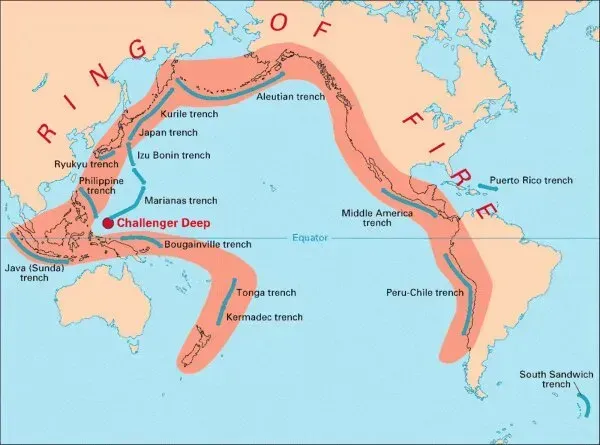UPSC
Exam Nugget
Volcanoes Unveiled: Types and Predictions
Last Updated
24th March, 2025
Date Published
24th March, 2025
Share This Post With Someone

Context:
This analysis is prompted by the eruption of Mount Lewotobi Laki-Laki in Indonesia on March 20, 2025, which disrupted flights from Bali, the article explores the nature of volcanoes, their types, and scientific prediction methods. It provides essential insights into volcanic activity and its global significance, relevant for understanding geophysical phenomena as of March 24, 2025.
- Volcanic Event Trigger: Mount Lewotobi Laki-Laki erupted on March 20, 2025, on Flores Island, Indonesia, canceling seven international flights from Bali and raising its alert to the highest level after a prior deadly eruption in November 2024.
- What Are Volcanoes?: Openings in Earth’s crust releasing molten rock, gases, and debris from magma chambers, often located at tectonic plate boundaries where plates diverge or converge.
- Types of Volcanoes:
- Cinder Cones: Small, steep-sided hills formed by pyroclastic material (e.g., ash, cinders) from explosive eruptions; example: Paricutin, Mexico.
- Composite/Stratovolcanoes: Tall, layered cones from alternating lava and ash eruptions; example: Mount Fuji, Japan.
- Shield Volcanoes: Broad, gently sloping structures from fluid basaltic lava flows; example: Mauna Loa, Hawaii.
- Lava Domes: Steep, mound-like formations from viscous lava piling near the vent; example: Mount St. Helens post-1980 eruption.
- Eruption Dynamics: Lava flow type (viscous or fluid) determines volcano shape and environmental impact, with explosive eruptions linked to gas-trapped viscous magma.
- Prediction Capability: Scientists can forecast eruptions hours to days ahead using seismographic data, ground deformation, gas emissions, and changes in gravity/magnetic fields—unlike earthquakes, which remain harder to predict.
- Ring of Fire: A 40,000-km horseshoe-shaped zone along the Pacific Ocean hosting 75% of Earth’s active volcanoes, including Mount Lewotobi Laki-Laki, due to tectonic activity.
- Notable Examples:
- Fagradalsfjall, Iceland: Erupted December 18, 2023, spewing lava 100 meters high after seismic buildup.
- Mount Etna, Italy: Europe’s most active volcano with five summit craters and frequent flank eruptions.

Key Terms:
- Volcano: Opening in Earth’s crust releasing magma, gases, and debris.
- Cinder Cone: Small volcano formed by explosive pyroclastic eruptions.
- Stratovolcano: Layered volcano from mixed lava and ash eruptions.
- Shield Volcano: Wide volcano built by fluid lava flows.
- Lava Dome: Steep volcano from thick, slow-moving lava.
- Ring of Fire: Pacific tectonic zone with most of Earth’s active volcanoes.
- Seismographic Data: Earthquake and tremor readings used to predict eruptions.
Link To The Original Article – https://indianexpress.com/article/upsc-current-affairs/upsc-essentials/knowledge-nugget-volcanoes-types-of-volcanoes-upsc-prelims-2025-9901533/